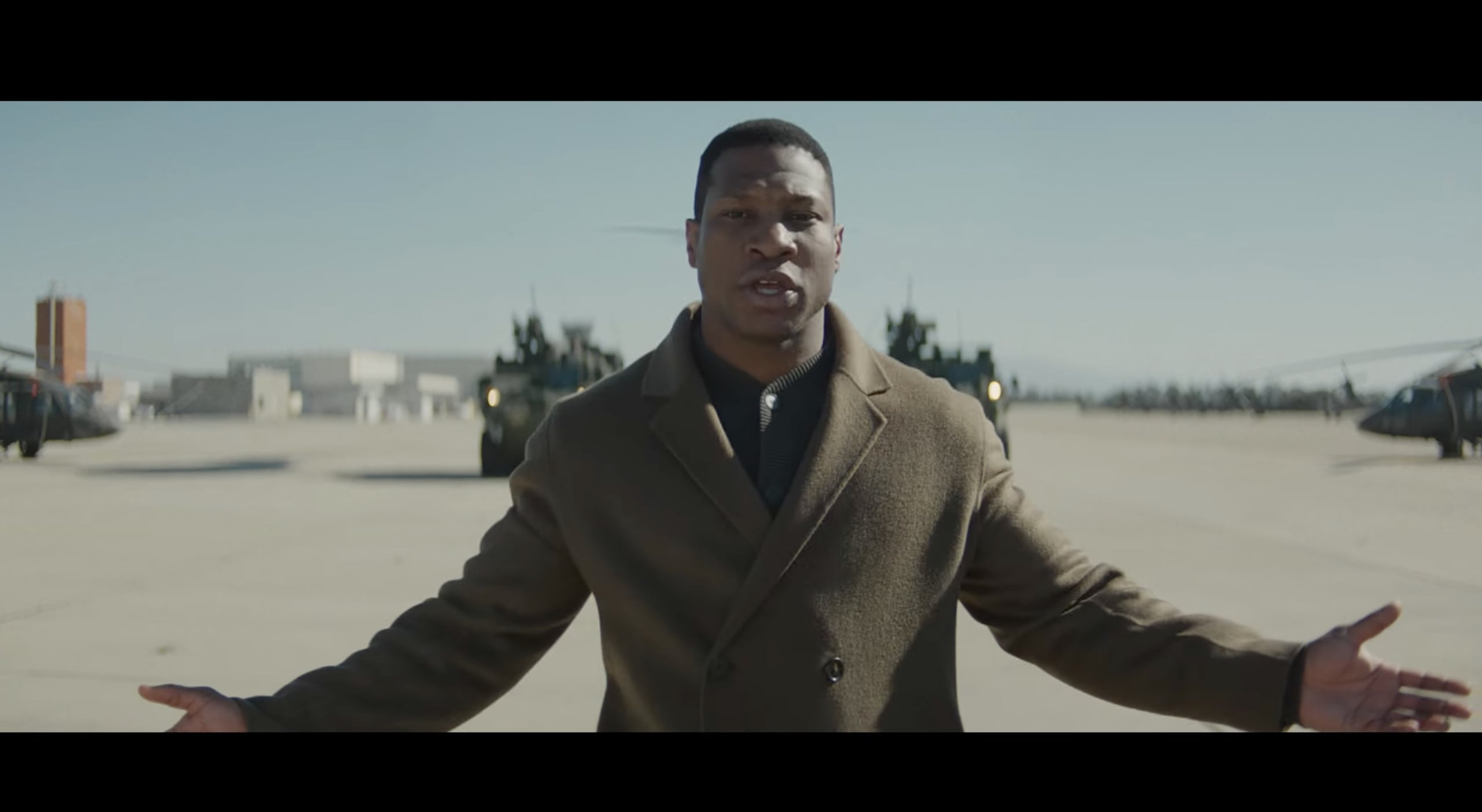Questions swirled on March 27 about the future of the Army’s $117 million “Be all you can be” rebranding effort, and the service and its partners did little to answer them.
Mere weeks after an elaborate rollout ceremony at The National Press Club, the service’s marketing office yanked its first two advertisements, the only ones released so far in the new campaign, from the airwaves. Army Times first reported the move, which followed actor Jonathan Majors’ March 25 arrest in New York City on charges of assault, strangulation and harassment against a 30-year-old woman.
The actor’s attorney forcefully denied the allegations in a March 26 statement, claiming that the charges will be “dropped imminently” due to video footage and witness testimony — but his representatives did not respond to a renewed comment request on March 27.
The Army’s marketing office declined an interview request and did not provide a response to questions sent for this story. DDB, the advertising conglomerate on a more than $4 billion contract to assist Army marketing, declined to answer questions and referred them to the Army.
It’s still not clear what the direct cost of pulling advertisements off the air and the web will be. Television networks often require advertisers to pay upfront for airtime, and cancellation policies vary by network or medium. Sometimes advertisers are able to obtain credits toward future buys.
The new “Be all you can be” advertisements were ubiquitous throughout the early rounds of March Madness, the NCAA men’s basketball championship tournament and the Army’s marketers will be on the ground for the Final Four fan festival in Texas to do in-person experiential marketing that goes beyond recruiters manning a table. Sports news website Sportico reported that pre-paid 30-second commercials for this year’s final game cost between $2.2 and $2.3 million, though it’s unclear how many spots the Army purchased.
But should the pause on the existing two spots become permanent, costs could quickly rise. An unknown but significant portion of the $117 million that Army Secretary Christine Wormuth said the new campaign required went to creative development and production on cinematic ads.
Complicating things further, the spots featured the Creed III and Ant-Man and the Wasp: Quantumania star as an on-screen narrator. Majors or his silhouette is visible on-screen for more than a minute of the 90-second version of one ad, “Overcoming Obstacles.” That means removing the actor would necessitate a costly reshoot or producing an entirely new round of creative content.
RELATED

But all isn’t lost, likely.
Some line items in the nine-figure rebrand, which marketing officials shared with Army Times in a February visit to their Chicago office, won’t require a redo even if the service permanently cans the Majors videos. The Army won’t need to replicate one-time costs such as research groups to select the “Be all you can be” tagline, developing brand assets like logos and fonts, and developing a new marketing officer career field.
*CORRECTION: An earlier version of this article incorrectly stated the location of the Army’s rollout of its new marketing campaign.
Davis Winkie covers the Army for Military Times. He studied history at Vanderbilt and UNC-Chapel Hill, and served five years in the Army Guard. His investigations earned the Society of Professional Journalists' 2023 Sunshine Award and consecutive Military Reporters and Editors honors, among others. Davis was also a 2022 Livingston Awards finalist.




